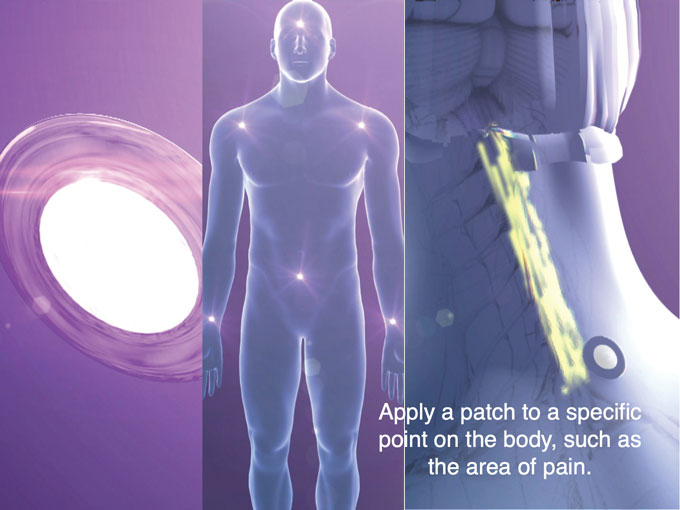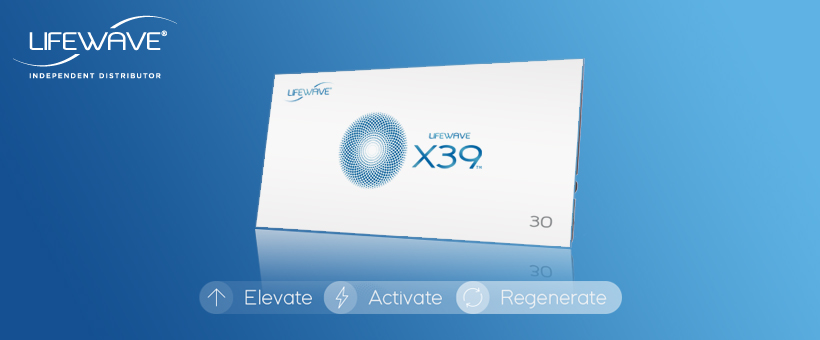Are you looking for a way to improve your well-being from the comfort of your own home? Look no further than DIY Infrared Light Therapy. Infrared light therapy has been shown to have a multitude of benefits, ranging from pain relief to improved circulation. In this article, we will explore creative ways that you can incorporate infrared light therapy into your daily routine, allowing you to reap the rewards of this innovative treatment. From DIY light boxes to infrared saunas, there are options for every budget and lifestyle. Get ready to discover the many ways you can experience the benefits of infrared light therapy.
1. Understanding Infrared Light Therapy
Infrared Light Therapy, also known as infrared radiation or infrared thermotherapy, is a form of treatment that uses low-level infrared light to penetrate the skin and provide various health benefits. It is a non-invasive and drug-free therapy that has gained popularity in recent years for its potential to enhance overall well-being.
1.1 What is Infrared Light Therapy?
Infrared Light Therapy involves the use of specific wavelengths of infrared light, which are invisible to the naked eye. These wavelengths are absorbed by the body’s tissues, promoting healing, reducing pain, and improving various bodily functions. Unlike ultraviolet rays, which can be harmful, infrared light is completely safe and gentle on the skin.
1.2 How Does Infrared Light Therapy Work?
Infrared Light Therapy works by stimulating the production of ATP (adenosine triphosphate), which is the energy currency of cells. When exposed to infrared light, the mitochondria – the powerhouse of cells – absorbs the light and increases its energy production. This energized ATP then fuels various physiological processes, such as cellular repair, inflammation reduction, and blood circulation improvement.
1.3 Benefits of Infrared Light Therapy
Infrared Light Therapy offers a wide range of benefits for both physical and mental well-being. Some of the key advantages include:
-
Pain relief: Infrared light penetrates deep into the tissues, promoting healing and reducing inflammation, making it effective in managing chronic pain conditions.
-
Skin health: Infrared light stimulates collagen production, improving skin elasticity, reducing fine lines, and promoting a youthful appearance.
-
Relaxation and stress reduction: Infrared light therapy helps to relax muscles, release tension, and promote a sense of calm, making it an excellent tool for stress management.
-
Sleep improvement: By regulating melatonin levels and promoting relaxation, infrared light therapy can help improve sleep quality and duration.
-
Wound healing: Infrared light stimulates cellular repair and increases blood flow, accelerating the healing process for wounds, cuts, and bruises.
-
Enhanced sports performance: Infrared light therapy can aid in muscle recovery, reducing exercise-related inflammation and promoting faster healing of injuries.
2. Different Types of Infrared Devices
Infrared light therapy can be experienced through various types of devices, each with its own unique characteristics and benefits. These devices include:
2.1 Infrared Saunas
Infrared saunas are enclosed spaces that emit infrared light to heat the body directly. Unlike traditional saunas, infrared saunas operate at lower temperatures, making them more comfortable and accessible for longer sessions. They provide deep-penetrating heat that promotes detoxification, relaxation, and skin health.
2.2 Infrared Heating Pads
Infrared heating pads are portable devices that emit infrared heat and can be placed on specific areas of the body. These pads are ideal for targeting localized pain and stiffness, providing soothing and therapeutic warmth to muscle and joint areas.
2.3 Infrared Lamps
Infrared lamps are compact and handheld devices that emit focused infrared light. They are commonly used for spot treatments and can be directed at specific areas of the body to promote healing, relief from pain, and improved circulation.
2.4 Infrared Light Panels
Infrared light panels are large, flat panels that emit a broad spectrum of infrared light. They are often used in professional settings like wellness centers or spas, but can also be installed in the home and provide full-body coverage for a more immersive experience of infrared light therapy.
3. DIY Infrared Light Therapy Techniques
While professional infrared therapy sessions are available, there are also creative and cost-effective ways to experience the benefits of infrared light therapy in the comfort of your own home. Here are some popular DIY techniques:
3.1 Creating an Infrared Sauna at Home
Building your own infrared sauna at home is a practical option for those who prefer regular, full-body infrared sessions. This can be accomplished by purchasing infrared sauna panels or converting an existing space into a sauna by using infrared heating elements. With proper planning and electrification, you can enjoy the benefits of infrared sauna therapy without the hefty price tag or space limitations.
3.2 Building Your Own Infrared Heating Pad
For targeted therapy, you can create your own infrared heating pad using simple materials. Start with a heating pad that allows for temperature adjustment and attach an infrared heating element to it. This DIY heating pad can be placed on specific areas of the body to provide localized relief and relaxation.
3.3 Homemade Infrared Lamp
Creating a homemade infrared lamp is a straightforward option for spot treatments. Begin by purchasing an infrared bulb and a clamp lamp fixture. Attach the bulb to the fixture and position the lamp at a suitable distance from the body. This DIY infrared lamp is portable and can be easily adjusted to target different areas, providing soothing warmth and promoting healing.
3.4 DIY Infrared Light Panels
For a more comprehensive DIY approach, you can construct your own infrared light panels using infrared LED light strips and a wooden frame. Mount the LED light strips on the frame and wire them to a power supply. This DIY infrared light panel can be hung on a wall or placed on a stand, allowing for full-body coverage and immersive infrared light therapy.
4. Incorporating Infrared Light Therapy into Everyday Life
Infrared light therapy can be seamlessly integrated into your everyday life to enhance various aspects of your well-being. Here are some specific ways you can incorporate it into your routine:
4.1 Infrared Light Therapy for Skin Health
Infrared light therapy has proven benefits for skin health. You can incorporate it into your skincare routine by using infrared light therapy devices specifically designed for facial treatments. These devices emit gentle, infrared light waves that penetrate the skin, stimulating collagen production and improving overall skin tone and texture.
4.2 Infrared Light Therapy for Pain Relief
If you suffer from chronic pain or muscle soreness, incorporating infrared light therapy into your daily routine can provide relief. Utilize handheld infrared lamps or heating pads that emit infrared heat to target specific areas of discomfort. Regular use can help alleviate pain, reduce inflammation, and promote faster healing.
4.3 Infrared Light Therapy for Relaxation and Stress Reduction
Stress and tension can take a toll on your physical and mental well-being. By incorporating infrared light therapy into your relaxation routine, you can experience deep relaxation and stress reduction. Set up an infrared sauna or create a calming space with infrared light panels, allowing the gentle warmth to envelop you and melt away stress.
4.4 Infrared Light Therapy for Sleep Improvement
If you struggle with falling asleep or achieving a restful night’s sleep, infrared light therapy may be the solution. Incorporate infrared light therapy into your bedtime routine by using a handheld device or an infrared heating pad. The soothing warmth and relaxation induced by infrared light can help regulate melatonin levels and signal to your body that it’s time to sleep.
5. Safety Precautions for DIY Infrared Light Therapy
While DIY infrared light therapy can be safe and beneficial, it’s essential to follow some safety precautions to ensure a positive experience. Here are some key considerations:
5.1 Understanding the Risks
Although infrared light therapy is generally safe for most people, excessive or incorrect use can lead to skin burns, dehydration, or eye damage. It’s important to use infrared devices according to the manufacturer’s instructions and be mindful of the recommended treatment durations and distances.
5.2 Consulting with a Healthcare Professional
Before incorporating DIY infrared light therapy into your routine, it’s advisable to consult with a healthcare professional, especially if you have any underlying medical conditions or are using any medications that may interact with the therapy. A healthcare professional can guide you on the appropriate usage and potential contraindications.
5.3 Proper Usage and Duration
Each type of infrared device has specific usage instructions and recommended treatment durations. It’s crucial to adhere to these guidelines to avoid any adverse effects. Start with shorter sessions and gradually increase the duration as your body adapts to the therapy.
5.4 Monitoring Body Response
Pay attention to how your body responds to infrared light therapy. If you experience any discomfort, skin irritation, or unusual symptoms, discontinue use and consult a healthcare professional. It’s important to listen to your body and adjust the therapy accordingly.
6. Tips for Optimizing DIY Infrared Light Therapy
To make the most of your DIY infrared light therapy sessions, here are some helpful tips:
6.1 Finding the Right Device for Your Needs
With the wide range of infrared devices available, it’s important to choose one that suits your specific needs and preferences. Consider factors such as size, portability, and treatment area coverage. Research different brands and read customer reviews to ensure you select a reliable and effective device.
6.2 Choosing the Right Location
Select a suitable location for your DIY infrared light therapy sessions. Ensure there is enough space to comfortably accommodate the device and allow for sufficient ventilation in the case of infrared saunas. Consider privacy and relaxation when choosing the location, as it will contribute to the overall effectiveness of the therapy.
6.3 Understanding the Ideal Duration and Frequency
Each person’s tolerance and response to infrared light therapy may vary. Start with shorter sessions and observe how your body reacts. Gradually increase the duration and frequency as your body adjusts. Remember to follow the manufacturer’s guidelines, as different devices may have specific recommendations.
6.4 Combining Infrared Therapy with Other Wellness Practices
Infrared light therapy can be even more effective when combined with other wellness practices. Consider incorporating meditation, deep breathing exercises, or stretching during your sessions to enhance relaxation and promote overall well-being. Experiment with different combinations to find what works best for you.
7. DIY Infrared Light Therapy for Specific Conditions
In addition to the general benefits, DIY infrared light therapy can also be targeted towards specific conditions. Here are some examples:
7.1 Infrared Light Therapy for Arthritis
For individuals with arthritis, infrared light therapy can provide relief from joint pain and stiffness. Use handheld infrared lamps or heating pads to target affected areas and experience the soothing warmth and anti-inflammatory effects of infrared light.
7.2 Infrared Light Therapy for Muscle Recovery
If you engage in intense physical activities or experience frequent muscle soreness, incorporating infrared light therapy into your recovery routine can help accelerate the healing process. Use infrared heating pads or saunas to provide deep-penetrating heat that promotes blood flow and reduces muscle inflammation.
7.3 Infrared Light Therapy for Wound Healing
Infrared light therapy can aid in the healing of wounds, cuts, and bruises by stimulating cellular repair and increasing blood circulation. Utilize handheld infrared lamps or light panels to provide localized or full-body exposure and promote faster healing.
7.4 Infrared Light Therapy for Seasonal Affective Disorder
For those who experience symptoms of seasonal affective disorder (SAD), DIY infrared light therapy can provide relief. Set up infrared light panels in your living space and expose yourself to the gentle warmth and light. This therapy can help regulate mood, enhance energy levels, and combat the winter blues.
8. DIY Infrared Light Therapy for Beauty and Skincare
Infrared light therapy has gained popularity in the beauty and skincare industry for its ability to promote healthy, radiant skin. Here are some specific applications for beauty and skincare:
8.1 Infrared Light Therapy for Acne
If you struggle with acne-prone skin, infrared light therapy can be a useful addition to your skincare routine. Use handheld infrared devices or specific infrared light masks to target areas of inflammation and reduce acne-causing bacteria. Regular treatment can help minimize breakouts and improve overall skin condition.
8.2 Infrared Light Therapy for Wrinkles and Fine Lines
To combat the signs of aging, incorporate infrared light therapy into your skincare regimen. Regular use of infrared light devices designed for facial treatments can boost collagen production, improve skin elasticity, and reduce the appearance of wrinkles and fine lines.
8.3 Infrared Light Therapy for Hair Growth
Infrared light therapy has shown promising results in stimulating hair growth and improving hair density. Utilize handheld infrared devices or specific infrared hair caps to target the scalp and promote blood flow to the hair follicles.
8.4 Infrared Light Therapy for Skin Tone and Texture
For those seeking to improve their overall skin tone and texture, infrared light therapy can contribute to a smoother and more even complexion. Incorporate handheld infrared devices or specific light panels designed for facial treatments into your skincare routine to achieve optimal results.
9. Exploring Alternative Uses of Infrared Light Therapy
In addition to the conventional applications, there are some unconventional and innovative ways to incorporate infrared light therapy into other aspects of your life. Here are a few examples:
9.1 Infrared Light Therapy for Pets
Pets can also benefit from the soothing effects of infrared light therapy. Consult with a veterinarian to determine the appropriate usage and duration for your pet’s specific needs. Homemade infrared lamps or heating pads can be utilized for local treatments on specific areas of discomfort.
9.2 Infrared Light Therapy in Gardening
Infrared light therapy can be used as a supplemental growing technique for plants. By providing infrared light exposure, plants can benefit from increased photosynthetic activity and enhanced overall growth. Consider incorporating infrared lights into indoor gardens or specific plant cultivation setups.
9.3 Infrared Light Therapy in Art and Design
Infrared light therapy can be creatively incorporated into artistic and design projects. It can be used to create captivating light installations, enhance visual effects, or experiment with unique light-based artworks. The versatile nature of infrared light provides artists and designers with endless possibilities for exploration and expression.
9.4 Infrared Light Therapy for Food Preparation
Infrared light therapy can also be utilized in food preparation and cooking. Infrared ovens or grills utilize infrared heat to cook food more quickly and evenly compared to traditional methods. This technology allows for healthier food preparation and shorter cooking times while retaining the natural flavors and nutrients of the ingredients.
10. Future of DIY Infrared Light Therapy
As the field of infrared light therapy continues to evolve, there are several exciting advancements and emerging techniques to look forward to:
10.1 Advancements in Infrared Light Therapy Technology
Ongoing research and development in the field of infrared light therapy technology are expected to bring about improvements in device effectiveness, efficiency, and user-friendliness. This includes advancements in LED technology, development of new handheld devices, and innovations in full-body infrared treatment options.
10.2 Emerging DIY Infrared Light Therapy Techniques
In addition to the current DIY techniques, new DIY approaches to infrared light therapy are expected to emerge. These may include the development of user-friendly, compact devices that cater to specific needs and conditions, making infrared light therapy more accessible and customizable.
10.3 Potential Risks and Misconceptions
As the popularity of DIY infrared light therapy grows, it’s important to remain informed about any potential risks or misconceptions surrounding its use. Ongoing research and education can help address any concerns and ensure safe and responsible DIY infrared light therapy practices.
10.4 Integrating Infrared Light Therapy into Everyday Life
As more people recognize the benefits of infrared light therapy, its integration into everyday life is likely to become more prevalent. From skincare and pain management to relaxation and sleep improvement, DIY infrared light therapy may become a routine practice for many individuals seeking natural and holistic methods for enhancing their well-being.
In conclusion, DIY infrared light therapy offers a creative and accessible way to experience the numerous benefits of this innovative treatment. Whether through creating your own devices, integrating it into your everyday routine, targeting specific conditions, or exploring alternative uses, this therapy has the potential to enhance your physical, mental, and emotional well-being. As you embark on your DIY infrared light therapy journey, remember to prioritize safety, consult with healthcare professionals when necessary, and enjoy the soothing and rejuvenating effects of this remarkable therapy.





